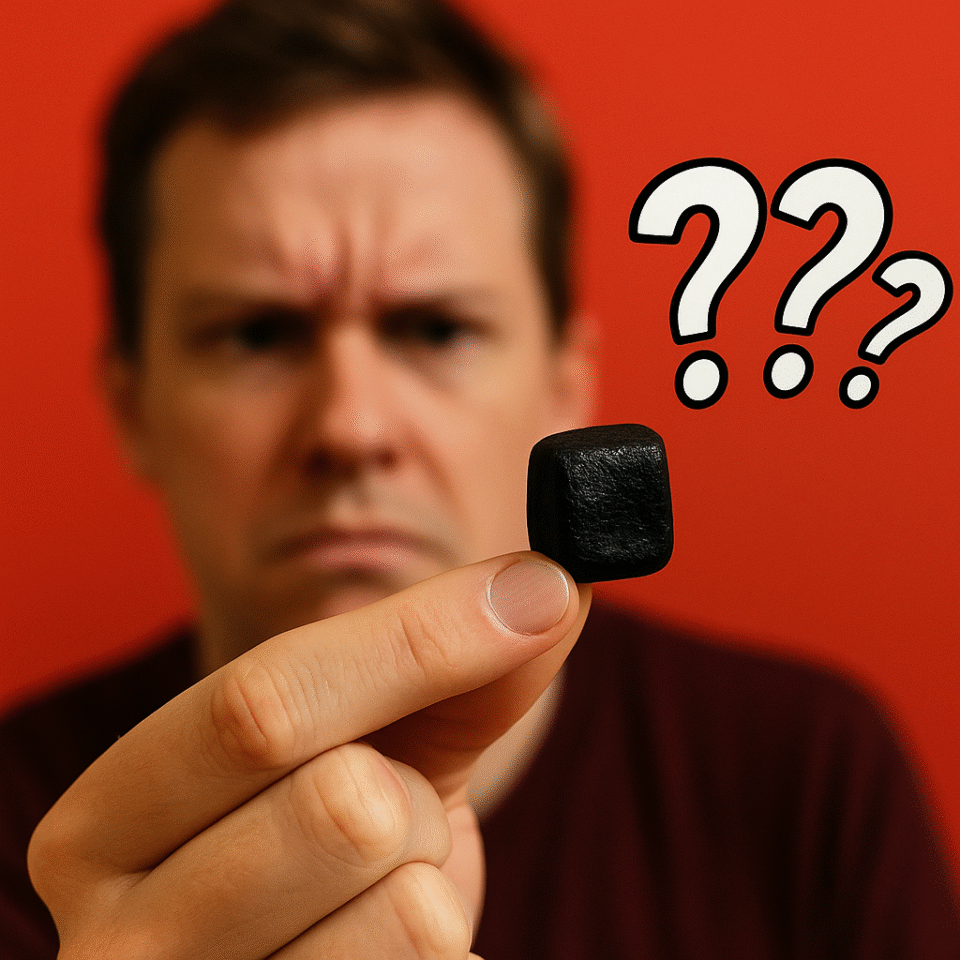You either love it or you spit it out.
There are few flavor experiences more polarizing than drop—the black licorice candy that holds a permanent place in the Dutch soul. If you’re American, chances are you recoil at the thought of anything labeled “black licorice.” If you’re Dutch, chances are you have a favorite type, a preferred brand, and strong opinions about whether dubbel zout (double salty) is culinary genius or an assault on humanity.
Drop isn’t just candy in the Netherlands. It’s cultural DNA. A pantry essential. A travel companion. And for those of us who grew up in the U.S. quietly loving black licorice while everyone else reached for Sour Patch Kids? Moving to the Netherlands feels like finding your tribe after years in flavor exile.
What is Drop, Exactly?
First off: it’s nothing like that sad black licorice rope you maybe tried once at a movie theater. Authentic drop is made from the root of the licorice plant (glycyrrhiza glabra), and often includes ammonium chloride, especially in the salty varieties that define Dutch licorice culture.
While the licorice plant is native to southern Europe and parts of Asia, the Dutch have mastered the art of turning it into candy. In fact, with consumption of over 4 pounds per person per year, licorice is the most loved candy in the Netherlands, accounting for more than 20% of all candy sold in the country.
Drop comes in every shape and texture imaginable—chewy, hard, soft, coin-shaped, diamond-cut, and whimsically formed into cats, cars, windmills, and countless other designs. The variety is staggering. In the Netherlands alone, there are over 400 different types of black licorice, making it a confectionery universe unto itself.
There are two major classification systems for drop:
- Sweet vs. salty (zoet vs. zout)
- Soft vs. hard (zacht vs. hard)
Some varieties throw in menthol or eucalyptus. Others add honey or bay leaf. The dubbel zout (double salt) variety contains extra ammonium chloride, delivering a punch that can make uninitiated foreigners question their life choices.
Why the Dutch Love It
Part of it is nostalgia. Drop is deeply embedded in Dutch childhoods—as a treat, a bribe, a comfort during long car rides or school exams. It’s also a cultural quirk that survived modern candy trends: kids grow up with it, adults keep eating it, and no one outgrows the taste.
But it’s also about the Dutch flavor profile: bold, clean, distinctive, and slightly medicinal. In the 15th century, the Dutch took control of the nutmeg and clove trade in Indonesia, introducing the Netherlands to the bitter, spicy flavors prominent in salty licorice. Brined and pickled dishes are also staples of the regional cuisine. Think of how popular herring is here. Drop fits right into that ecosystem of flavors that make perfect sense once you surrender to them.
There’s a medicinal history as well. Liquorice has been around for quite some time. It was used way back in the ages of the pharaohs and other greats, such as the Caesars, for its medicinal purposes—often for coughs or stomach ulcers. Even today, some Dutch people still believe drop helps clear nasal passages and soothe sore throats.
And it’s absolutely everywhere. You’ll find drop in grocery stores, gas stations, pharmacies (yes, pharmacies), vending machines, desk drawers, purses, and glove compartments. The Dutch buy more black licorice than they do toothpaste. It’s that essential.
Why Most Americans Hate It
To be fair, Americans aren’t wrong for finding drop intense—they’re just unprepared for the flavor assault.
The salt in zoute drop isn’t table salt. It’s ammonium chloride, which can hit the tongue like a chemical experiment gone wrong. If your only licorice exposure is Twizzlers (which barely contains actual licorice), this is a crash course in bitter, briny intensity.
And if you accidentally grab a handful of dubbel zout on your first try, well… we’ve all made that mistake. I’ve seen grown adults spit it out in shock.
To an American palate, drop can taste like a cross between cough syrup, beef jerky, and betrayal. There is something slightly sadistic about Dutch drop… It subtlety lulls you into a false sense of security that it might taste quite nice. But give it time. Or don’t. It’s okay to opt out.
A Licorice-Lover in the Right Place
Personally, I grew up as the weirdo in the States who loved black licorice. I had to defend it constantly—in Halloween trades, in gas station snack runs, in every social setting where candy was discussed.
Moving to the Netherlands felt like finally finding my candy homeland. Drop isn’t a niche taste here. It’s normal. It’s expected. It’s celebrated. I no longer have to explain my peculiar preference—here, I’m just one of millions.
My advice for newcomers? Start with zoete drop (sweet) if you’re unsure. Try muntdrop (coin-shaped, usually sweet and hard) if you want something approachable. Avoid dubbel zout unless you’re either Dutch-born or emotionally prepared for a flavor experience that will redefine your understanding of intensity.
Final Thoughts
Drop is one of those cultural details that doesn’t get enough attention in expat guides. But it should. It’s a tiny, chewy window into Dutch taste preferences, history, and cultural identity.
You don’t have to love it to live here. But if you do? Welcome home. You’ve found your flavor tribe.
And if you hate it? More for the rest of us.
About What the Dutch is That?
Why are windmills, tulips, and wooden shoes so deeply tied to the Dutch identity? What’s real, what’s myth, and what’s been quietly misunderstood?
What the Dutch is That? is a series that unpacks how certain things became synonymous with the Netherlands—and what they reveal about the people, the land, and the rhythm of life here. Not just symbols, but stories. Not just icons, but origins.








